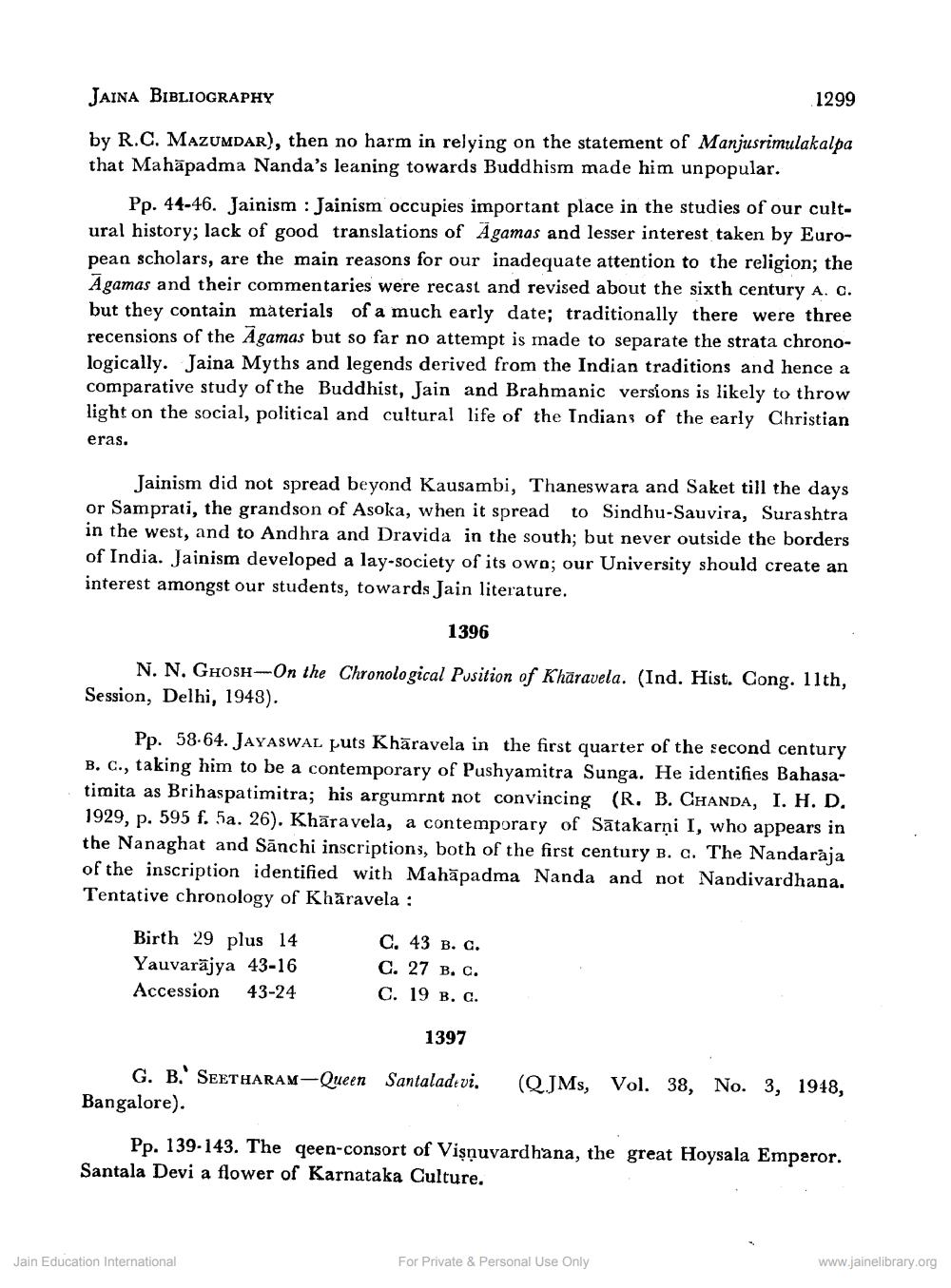________________
JAINA BIBLIOGRAPHY
1299 by R.C. MAZUMDAR), then no harm in relying on the statement of Manjusrimulakalpa that Mahäpadma Nanda's leaning towards Buddhism made him unpopular.
Pp. 44-46. Jainism : Jainism occupies important place in the studies of our cultural history; lack of good translations of Agamas and lesser interest taken by European scholars, are the main reasons for our inadequate attention to the religion; the Agamas and their commentaries were recast and revised about the sixth century A. C. but they contain materials of a much early date; traditionally there were three recensions of the Agamas but so far no attempt is made to separate the strata chronologically. Jaina Myths and legends derived from the Indian traditions and hence a comparative study of the Buddhist, Jain and Brahmanic versions is likely to throw light on the social, political and cultural life of the Indians of the early Christian eras.
Jainism did not spread beyond Kausambi, Thaneswara and Saket till the days or Samprati, the grandson of Asoka, when it spread to Sindhu-Sauvira, Surashtra in the west, and to Andhra and Dravida in the south; but never outside the borders of India. Jainism developed a lay-society of its owo; our University should create an interest amongst our students, towards Jain literature.
1396
N. N. GHOSH-On the Chronological Pusition of Khāravela. (Ind. Hist. Cong. 11th, Session, Delhi, 1948).
Pp. 58.64. JAYASWAL puts Khäravela in the first quarter of the second century B. C., taking him to be a contemporary of Pushyamitra Sunga. He identifies Bahasatimita as Brihaspatimitra; his argumrnt not convincing (R. B. CHANDA, I. H. D. 1929, p. 595 f. 5a. 26). Khāravela, a contemporary of Satakarņi I, who appears in the Nanaghat and Sānchi inscriptions, both of the first century B. c. The Nandarāja of the inscription identified with Mahāpadma Nanda and not Nandivardhana. Tentative chronology of Khāravela :
Birth 29 plus 14 Yauvarājya 43-16 Accession 43-24
C. 43 B. c. C. 27 B. c. C. 19 B. C.
1397
G. B.' Seetharam-Queen Santaladtvi. Bangalore).
(Q.JMs, Vol. 38, No. 3, 1948,
Pp. 139-143. The qeen-consort of Vişnuvardhana, the great Hoysala Emperor. Santala Devi a flower of Karnataka Culture.
Jain Education International
For Private & Personal Use Only
www.jainelibrary.org




